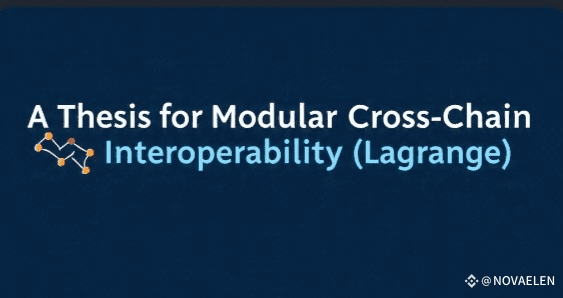As Web3 matures into a modular, multi-chain ecosystem, the demand for secure and scalable cross-chain computation has never been greater. DeFi protocols in particular need reliable ways to verify state across blockchains, DA layers, and rollups—without introducing inefficiencies or unnecessary trust assumptions. Lagrange’s ZK MapReduce (ZKMR) introduces a breakthrough model that applies the principles of MapReduce to zero-knowledge proofs, enabling provable computation over fragmented blockchain data.
What is ZK MapReduce?
Inspired by big data processing, MapReduce distributes large computational tasks into smaller “map” jobs, then aggregates them during the “reduce” phase. Lagrange extends this approach into the realm of zero-knowledge proofs:
Map Phase: Small, independent computations are run on state data from different chains or contracts, with each prover generating a proof for its subset.
Reduce Phase: Those proofs are recursively aggregated into one succinct proof that validates the entire operation.
The outcome: a single, verifiable proof for complex multi-chain computations.
Securing Cross-Chain Interactions
Within Lagrange’s ZK Big Data stack, ZKMR acts as a foundation for cross-chain analytics, messaging, and interoperability. Instead of relying on bridges or manual relays, a ZKMR proof can:
1. Pull state roots and storage data from multiple blockchains.
2. Execute logic over that combined data (e.g., summing liquidity across DeXs).
3. Deliver a single proof to a verifier contract on the target chain, which validates correctness without needing to trust off-chain sources.
This ensures integrity in cross-chain communication and reduces attack surfaces.
Scalable by Design
ZKMR introduces near-logarithmic efficiency in proof generation (O(log n)), compared to sequential O(n) models. By parallelizing workloads, it scales smoothly as data grows across L2s, rollups, and appchains. For example, ZKMR can compute metrics like multi-chain TWAPs across hundreds of chains—previously infeasible due to cost and complexity.
Use Cases & Ecosystem Applications
Cross-Chain DeFi Aggregation: Fund managers can calculate total liquidity across rollups and verify results with a single proof—eliminating reliance on off-chain oracles.
Secure Multi-Chain Analytics: Developers can prove metrics like average balances or historical fees across different chains, on-chain and trustlessly.
Light-Client Verification & DA Sharing: In combination with Lagrange’s State Committees and IBC, ZKMR enables trust-minimized validation for simulations, liquidations, and risk controls.
Workflow at a Glance
1. State Proof Collection – Gather roots, slots, and Merkle proofs from multiple chains.
2. Map Phase – Run computations in parallel, generating local proofs.
3. Reduce Phase – Aggregate those into a single proof.
4. On-Chain Verification – A smart contract validates the proof and outputs success/failure.
All powered by Lagrange’s SDK and verifiable database layers, simplifying developer adoption.
Why ZKMR Matters
Trustless, modular cross-chain logic.
Performance boosts through parallelized, logarithmic scaling.
Reduced developer overhead compared to handling multiple bridges.
Unified proofs across fragmented blockchain states.
As modular blockchain infrastructure accelerates, ZKMR is not just a tool but a foundation.
The Road Ahead
Expanded dApp Design: From cross-chain arbitrage detection to programmable economic layers.
Interoperability Synergies: Integration with IBC, Polymer, and State Committees for a unified data fabric.
DeFi Innovation: Enabling robo-advisors, cross-chain portfolio tools, and synthetic assets with cryptographic trust.
In Closing
ZK MapReduce redefines cross-chain computation: replacing bridge-based trust with parallelized, proof-based assurance. By merging big-data methodology with zero-knowledge security, it unlocks scalable, secure composability across Web3’s modular future.
@Lagrange Official #lagrange $LA



